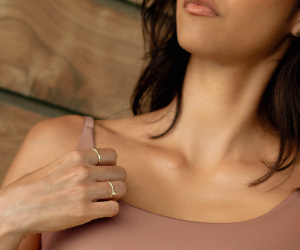Breasts are arguably one of the most defining physical features of a woman, and their size can have both a physiological and psychological impact. A great-looking, proportionate pair of breasts can make one radiate self-confidence in both personal and professional environments.
A most challenging decision to be considered for a breast reconstruction or augmentation is how much larger you’d like to go. Size will determine not only how your new breasts will look, but also how complementary they will be to the rest of your frame.
Here are some important factors to consider when choosing your breast implant size.
1. Patient Body Type
Each body type is different in the sizes of implants it can comfortably accommodate and look attractive with. You don’t want to end up with breasts that appear too large or small relative to your frame.
Discomfort and sagging can also occur if the implants are too heavy for the body to bear, sometimes requiring revision surgery.
The overall width of your chest, distance between each breast, and base width or circumference of your bust must be carefully considered whern choosing an appropriate breast implant size. Skin thickness and firmness may also be a factor, as a heavier implant can contribute to a sagging appearance.
A 150 cc (cubic centimeters, a measure of volume) implant may be just right for a woman with a slim body, but might barely be noticeable on a woman with a larger build, who might find a 350 cc breast implant more suitable.
Pre-existing breast asymmetry may be corrected by using implants of two different volumes and/or fat transfer.
2. Breast Profile / Shape
The implant’s shape and projection has to match your body size and shape. A round profile would look good on a small-bodied woman as it provides upper-pole perkiness/fullness and firmness, while a teardrop– or oval-shaped (also known as anatomical) profile might complement a woman with a bigger body by retaining lower-pole fullness and curvature.
Many women who receive breast reconstruction prefer a teardrop shape as it may better mimic the shape of their original breasts, while more mature patients or those would like a breast lift (mastopexy) in conjunction with their augmentation may prefer a round shape for more upper-pole fullness, which lends a more youthful appearance.
3. Patient Age / Skin Quality
Skin is suppler and tighter when you’re younger, and can more easily be worked on to accommodate your desired implant size. Suppler skin will translate into a firm pair of breasts that can carry its own weight well and retain its shapely look. It also helps maintain a natural feel and appearance.
There must also be enough tissue coverage for the implants to ensure that your breasts are evenly shaped (symmetrical) and retain their natural feel. Placing a large implant into a woman with thin or lax breast tissue will result in the new breasts looking bloated or stretched.
Autologous (i.e. self-derived) fat grafts may be helpful for implant coverage, shape refinements, and precise, small-scale enhancements (such as boosting cleavage). When processed and filtered using a closed system, fat grafting for appropriate patients is an excellent option to use in conjunction with smaller implants.
In fact, the MotivaHybrid® breast augmentation procedure – which combines smaller implants with high-quality fat grafts for more refined, balanced, and natural-looking results – comes with much lower risk than a standard augmentation with larger implants.
4. Pregnancy & Breastfeeding
The female body can undergo some pronounced changes during pregnancy. Your breasts could grow as your pregnancy progresses, and/or also shrink after delivery and throughout the breastfeeding process.
Undergoing an implant procedure during or before pregnancy presents some drawbacks and should not be taken lightly as it can have a pronounced effect on breastfeeding. We recommend waiting until after all pregnancies and breastfeeding periods are completed to decide on size and receive a breast augmentation. This will help you avoid the need for more surgery after delivery/breastfeeding to make your breasts look as they did before.
The placement of your implants, coupled with your desired implant size and the amount of breast tissue you personally have will determine how much of an impact the procedure will have on your ability to breastfeed.
If you may wish to become pregnant and/or breastfeed, you should discuss this with your surgeon so that you can both determine the required breast implant size and surgical techniques early on.
Other tips for determining your implant size:
- Frankly discuss with your surgeon the size you have in mind so that s/he has a clear idea of what you want. Have as many sessions as possible and exhaustively go through all sizing options available to you. They can tell you if your desired implant size is ideal for you or not.
- Do not rely on bra cup size when choosing your size, as the inconsistent cup size standards used by bra manufacturers can be very misleading.
- Review as many implant before-and-after images and samples as possible for a more definitive idea of your ideal breast implant size, and also to find other options you might not have previously considered.
- A second opinion never hurts. Try consulting trusted family and friends.
- Ensure that your doctor makes you fully aware of the options available to you, as well as the associated risks.
-
Bigger isn’t always better.
- Very large implants might end up taking attention away from your other flattering features.
- Larger implants are more prone to sagging and carry more risks. Severe back pain is a common problem associated with very large implants.
- You should be mentally prepared for the long term to deal with the risks and level of attention that comes with getting large implants.
If you are interested in a breast enhancement and would like to learn more about your options for implant size, you can find an experienced surgeon in your area by using our clinic locator.

